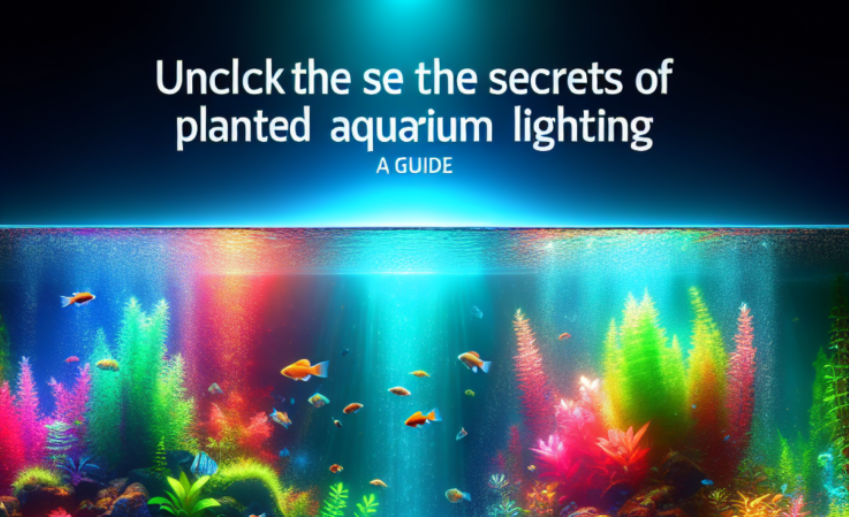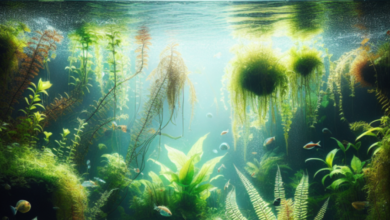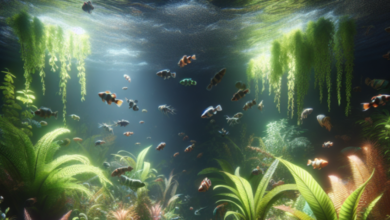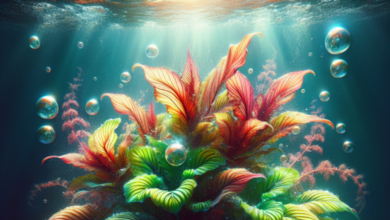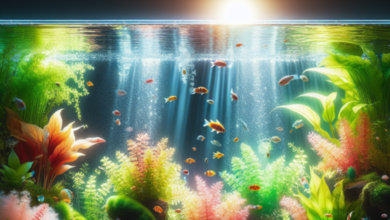Introduction
Creating a beautiful planted aquarium is a rewarding endeavor that requires careful attention to various factors. One of the most crucial aspects is lighting. Proper lighting not only enhances the aesthetics of your aquarium but also plays a vital role in the growth and health of your aquatic plants. In this comprehensive guide, we will explore the secrets of optimal planted aquarium lighting and provide you with valuable insights to help you create a thriving aquatic ecosystem.
Understanding the Importance of Lighting
Before delving into the specifics, let’s first understand why lighting is so vital for planted aquariums. Light is an essential component of photosynthesis, the process through which plants convert light energy into chemical energy, promoting growth and vitality. In the absence of adequate light, your plants will struggle to photosynthesize effectively, leading to stunted growth, yellowing leaves, and even plant death.
Types of Aquarium Lighting
Not all lights are created equal when it comes to planted aquariums. It’s crucial to choose the right type of lighting to ensure optimal plant growth. Here are the most common types of aquarium lighting:
1. Incandescent Lighting
Incandescent bulbs are the traditional choice for aquarium lighting. While they are inexpensive and widely available, they are not suitable for planted aquariums. Incandescent bulbs emit a high amount of heat and lack the necessary light spectrum for proper plant growth.
2. Fluorescent Lighting
Fluorescent lights have been a popular choice among aquarium enthusiasts for many years. They are energy-efficient, emit less heat, and provide a wider spectrum of light. However, fluorescent bulbs tend to be less intense compared to other options, which may limit their effectiveness for high-demanding plant species.
3. Compact Fluorescent Lighting (CFL)
CFL bulbs are an improved version of traditional fluorescent lights. They offer higher intensity and a broader light spectrum, making them a suitable choice for most planted aquariums. CFL bulbs are available in various color temperatures, allowing you to create the perfect lighting conditions for your specific plants.
4. LED Lighting
LED lights have revolutionized the aquarium lighting industry. They are energy-efficient, long-lasting, and offer unparalleled control over various lighting parameters. LED lights can be fine-tuned to provide specific light spectrums, intensity levels, and even simulate natural day-night cycles. While initially more expensive, LED lighting is a cost-effective and environmentally-friendly choice for planted aquarium enthusiasts.
Factors to Consider for Optimal Lighting
Now that we have explored the different types of aquarium lighting, let’s discuss the crucial factors to consider when setting up optimal lighting for your planted aquarium:
1. Light Intensity
Different plants have varying light intensity requirements. It’s essential to understand the light needs of your plants to ensure proper growth. Low-light plants, such as Anubias and Java Fern, thrive under lower light intensities, while high-light plants, like Glossostigma and Dwarf Hairgrass, require more intense lighting. Strike a balance by selecting appropriate lighting fixtures and adjusting their distance from the water surface.
2. Light Duration and Photoperiod
Plants require a suitable photoperiod, which refers to the duration of light exposure they receive each day. On average, most planted aquariums benefit from 8-10 hours of light per day. However, it’s crucial to research the specific light requirements of your plant species to create an appropriate photoperiod. Using a timer for your lighting setup ensures consistent and regulated photoperiods.
3. Light Spectrum
The light spectrum refers to the range of colors emitted by the lighting source. For optimal plant growth, a full-spectrum light that includes both red and blue wavelengths is crucial. Red light promotes flowering and fruiting, while blue light enhances leaf development. Some advanced LED lighting systems allow you to adjust the spectrum to cater to the specific needs of your plants.
4. Light Positioning
Proper positioning of your lighting fixtures is essential to ensure even light distribution and prevent shadowing in your aquarium. Consider the depth of your tank and the height of your plants when determining the ideal placement. Adjustable mounting brackets or hanging kits can help you achieve the desired positioning.
5. Light Reflection and Aquarium Background
Maximize the effectiveness of your lighting by utilizing reflective materials, such as white aquarium backgrounds or reflective films. These materials help bounce light back into the aquarium, ensuring that your plants receive uniform illumination. Avoid dark backgrounds that absorb light and reduce its efficiency.
6. Algae Control
While light is crucial for plant growth, it also provides energy for algae. Finding the right balance is key to preventing excessive algae growth. Adjusting the lighting duration, intensity, and spectrum can help control algae outbreaks. Additionally, incorporating algae-eating fish and regular water maintenance practices will keep algae growth in check.
Conclusion
Achieving optimal planted aquarium lighting is a journey that requires careful consideration of various factors. By understanding the importance of lighting, selecting the right type of lighting, and considering factors such as light intensity, duration, spectrum, positioning, and algae control, you can create an environment where your aquatic plants thrive. Remember to regularly monitor your plants’ response to ensure they are receiving adequate lighting, and be prepared to make adjustments accordingly.
FAQ
Q1: Can I use regular household LED bulbs instead of specialized aquarium LED lights?
A1: While it may be tempting to use regular LED bulbs, they are not designed to provide the specific light spectrum required for optimal plant growth. It’s best to invest in dedicated aquarium LED lights that offer the necessary intensity and spectrum control.
Q2: How often should I replace my aquarium light bulbs?
A2: The lifespan of aquarium light bulbs varies depending on the type and brand. Generally, fluorescent bulbs should be replaced every 6-12 months, while LED bulbs can last up to 5 years or more. Refer to the manufacturer’s recommendations for specific guidance.
Q3: Can I use natural sunlight as a light source for my planted aquarium?
A3: While natural sunlight can provide some benefits, it’s challenging to control and regulate its intensity and spectrum. Excessive sunlight can lead to algae blooms and temperature fluctuations. It’s best to use artificial lighting that offers better control.
Q4: How do I prevent algae growth in my planted aquarium?
A4: Besides controlling lighting parameters, maintaining a balanced nutrient level, regular water changes, and incorporating algae-eating fish and invertebrates can help control algae growth. Avoid overfeeding and keep your aquarium clean to minimize the nutrients available for algae.
Q5: Can I leave the aquarium lights on 24/7?
A5: It’s not recommended to leave the lights on continuously. Plants, like any living organism, benefit from regular periods of darkness to rest and recover. Aim for a consistent photoperiod of 8-10 hours per day to mimic natural day-night cycles.
Remember, the key to unlocking the secrets of optimal planted aquarium lighting lies in finding the right balance and understanding the unique needs of your plants. With the knowledge gained from this guide, you are now equipped to create a stunning aquatic paradise in your own home. Happy aquascaping!
